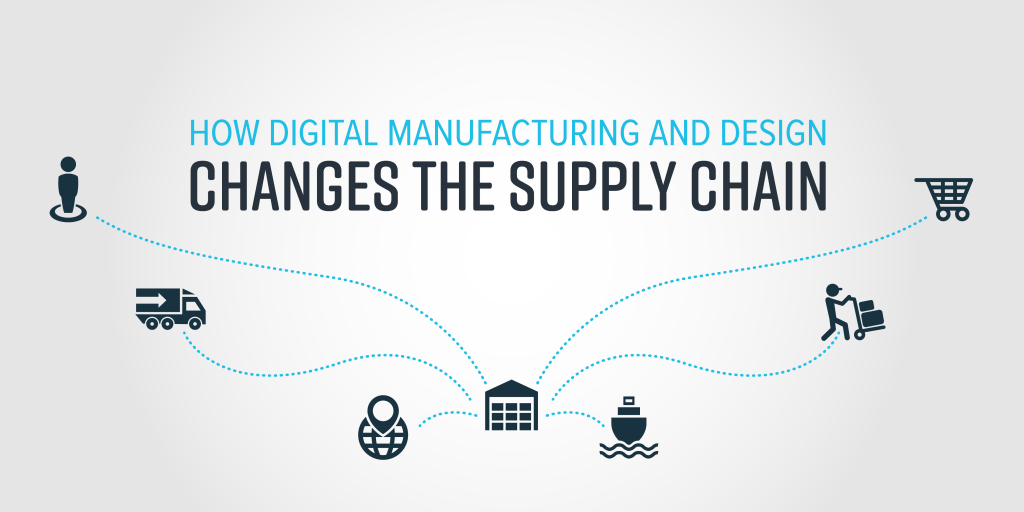In 2018, manufacturing generated more than 11% of the United State’s economic output. As many as 98% of the manufacturing industry is made up of small and medium-sized businesses. As many as 75% of those companies have less than 20 employees.
The digital world and the manufacturing world are increasingly intertwined. This link between the physical world and the digital is changing how companies do business, which is how the newly coined “digital manufacturing and design” or DM&D came to be.
DM&D optimizes the product life-cycle by:
- Combining the power of software, data, and control systems
- Melding those technologies to model, simulate, analyze, control, and optimize product development
Businesses that are able to automate steps of the manufacturing process via digital platforms can push towards new technologies. These technologies utilize real-time analysis to adapt and optimize the product life-cycle.
How?
Digital Twins and Threads
A digital twin makes it possible for you to link a physical product with a digital model of that product. It makes it so that multiple experts and stakeholders can be involved in the creation, testing, and production of a design in real-time.
By using a digital twin, the supply chain is connected from end-to-end with a digital thread. While this level of technology might seem out of most small businesses’’ reach, giants like Amazon and GE manage these processes as a virtual vertical integrated enterprise.
What does that mean?
The Factory of the Future
That means small-to-medium enterprises (SMEs) will become part of the supply chains of original equipment manufacturers (OEMs). This relationship will ultimately benefit both OEMs and SMEs. OEMs receive reliable partners along the supply chain, while SMEs get access to the technologies that enhance both production and processes.
The right partner can help SMEs accomplish the following:
- Automated data exchange between all stakeholders
- Data-driven product planning and design
- Automated data collection and analysis
- Optimized manufacturing performance
- Ensure cost-competitive, quality manufacturing
The right partner will help SMEs secure their place in the digital future with ready access to the digital design tools that industry giants are using.
To learn more about digital manufacturing and design, check out this post by IndustryWeek for more info, then reach out to your local Manufacturing Extension Partnership (MEP) center.

